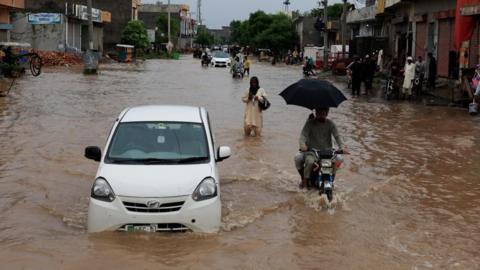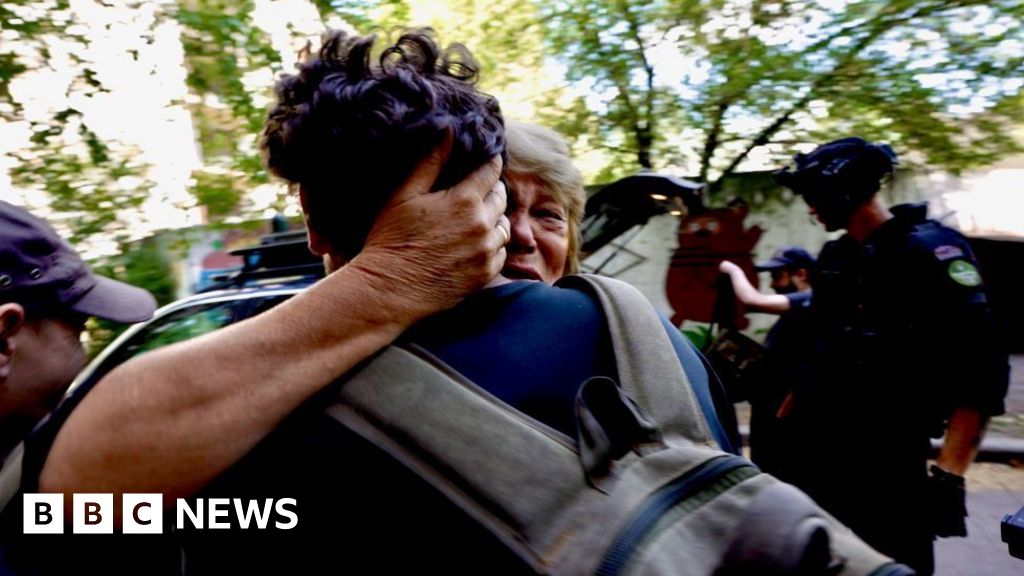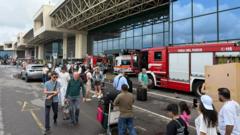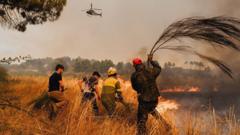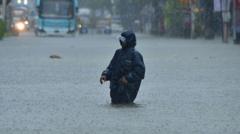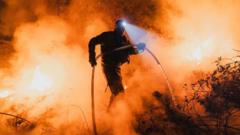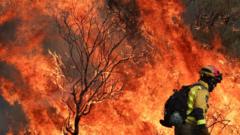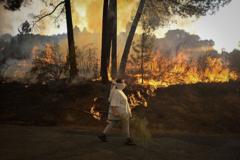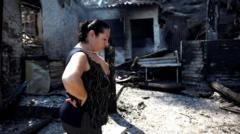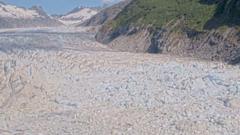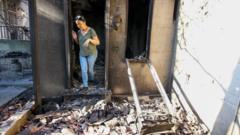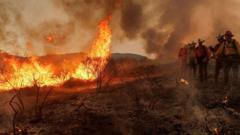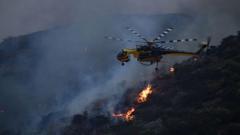Smoke from wildfires in Manitoba, which is experiencing its worst fire season in three decades, has caused hazardous air quality conditions across Eastern Canada and parts of the United States, including Toronto. On Monday, July 14, officials from Environment Canada issued an air quality alert as smoke drifted eastward following a hot weekend. Toronto's air quality ranked among the worst globally, according to the IQAir monitoring platform.
Residents were advised to limit outdoor activities as the smoke blanket enveloped not only Toronto but also impacted cities like Saskatoon in Saskatchewan. Meanwhile, in the United States, regions in the Great Lakes, including northern Minnesota, Wisconsin, and parts of New York and Pennsylvania, noticed a notable dip in air quality.
Meteorologist Ian Hubbard from Environment Canada explained that smoke usually has minimal health effects unless pushed closer to Earth's surface. Air quality is expected to slightly improve overnight, but the forecast predicts above-normal temperatures exceeding 30 degrees Celsius (86 degrees Fahrenheit) throughout the week.
Though the wildfire severity in Canada has been less drastic than in 2023, when record acres burned, Manitoba's situation remains dire. Premier Wab Kinew recently declared a state of emergency to mobilize resources for affected areas, highlighting the urgency of evacuating residents. Tragically, two individuals in a community northeast of Winnipeg perished in May due to the wildfires, and over 30,000 others were forced to flee, some lifted by helicopters from remote locations.
The wildfires are also straining U.S.-Canada relations, exacerbated by a trade dispute. Six Republican lawmakers voiced their frustrations towards Canada regarding the smoke situation, attributing it to supposed forestry management failures. Congressman Tom Tiffany even shared a social media post asserting that Canada should be accountable for its wildfire management, as many fires emerge in remote and unmanaged areas, primarily triggered by lightning strikes.
Residents were advised to limit outdoor activities as the smoke blanket enveloped not only Toronto but also impacted cities like Saskatoon in Saskatchewan. Meanwhile, in the United States, regions in the Great Lakes, including northern Minnesota, Wisconsin, and parts of New York and Pennsylvania, noticed a notable dip in air quality.
Meteorologist Ian Hubbard from Environment Canada explained that smoke usually has minimal health effects unless pushed closer to Earth's surface. Air quality is expected to slightly improve overnight, but the forecast predicts above-normal temperatures exceeding 30 degrees Celsius (86 degrees Fahrenheit) throughout the week.
Though the wildfire severity in Canada has been less drastic than in 2023, when record acres burned, Manitoba's situation remains dire. Premier Wab Kinew recently declared a state of emergency to mobilize resources for affected areas, highlighting the urgency of evacuating residents. Tragically, two individuals in a community northeast of Winnipeg perished in May due to the wildfires, and over 30,000 others were forced to flee, some lifted by helicopters from remote locations.
The wildfires are also straining U.S.-Canada relations, exacerbated by a trade dispute. Six Republican lawmakers voiced their frustrations towards Canada regarding the smoke situation, attributing it to supposed forestry management failures. Congressman Tom Tiffany even shared a social media post asserting that Canada should be accountable for its wildfire management, as many fires emerge in remote and unmanaged areas, primarily triggered by lightning strikes.




